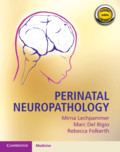Book contents
- Perinatal Neuropathology
- Perinatal Neuropathology
- Copyright page
- Contents
- Preface
- Acknowledgments
- Abbreviations
- Section I Techniques and Practical Considerations
- Approach to Autopsy of the Perinatal Nervous System
- Ancillary Studies
- Prosection Techniques
- Tissue Selection
- Chapter 13 Selection of Brain Areas for Microscopic Examination
- Chapter 14 Technical Considerations in Perinatal CNS Tissue Processing
- Chapter 15 Staining Techniques
- Reporting
- Section 2 Human Nervous System Development
- Section 3 Stillbirth
- Section 4 Disruptions / Hypoxic-Ischemic Injury
- Section 5 Malformations
- Section 6 Perinatal Neurooncology
- Section 7 Spinal and Neuromuscular Disorders
- Section 8 Eye Disorders
- Section 9 Infections: In Utero Infections
- Section 10 Metabolic / Toxic Disorders: Storage Diseases
- Section 11 Forensic Neuropathology
- Appendix 1 Technical Considerations in Perinatal CNS
- Index
- References
Chapter 13 - Selection of Brain Areas for Microscopic Examination
from Tissue Selection
Published online by Cambridge University Press: 07 August 2021
- Perinatal Neuropathology
- Perinatal Neuropathology
- Copyright page
- Contents
- Preface
- Acknowledgments
- Abbreviations
- Section I Techniques and Practical Considerations
- Approach to Autopsy of the Perinatal Nervous System
- Ancillary Studies
- Prosection Techniques
- Tissue Selection
- Chapter 13 Selection of Brain Areas for Microscopic Examination
- Chapter 14 Technical Considerations in Perinatal CNS Tissue Processing
- Chapter 15 Staining Techniques
- Reporting
- Section 2 Human Nervous System Development
- Section 3 Stillbirth
- Section 4 Disruptions / Hypoxic-Ischemic Injury
- Section 5 Malformations
- Section 6 Perinatal Neurooncology
- Section 7 Spinal and Neuromuscular Disorders
- Section 8 Eye Disorders
- Section 9 Infections: In Utero Infections
- Section 10 Metabolic / Toxic Disorders: Storage Diseases
- Section 11 Forensic Neuropathology
- Appendix 1 Technical Considerations in Perinatal CNS
- Index
- References
Summary
Tissue specimens collected during the autopsy are largely used for diagnostic purposes; however, portions of obtained samples are also frequently preserved for research/teaching with adequate consent. Therefore the selection of a sampling protocol largely depends on the autopsy objectives. Regardless of the primary objective, the examiner should always keep in mind that inadequate tissue sampling during the autopsy may have medical and/or legal consequences, especially when a detailed report is required. Neuropathological examination is no exemption to this rule, being usually guided by the specific diagnostic question, although brain autopsy may be performed for brain banking and future research purposes [1].
- Type
- Chapter
- Information
- Perinatal Neuropathology , pp. 59 - 61Publisher: Cambridge University PressPrint publication year: 2021

